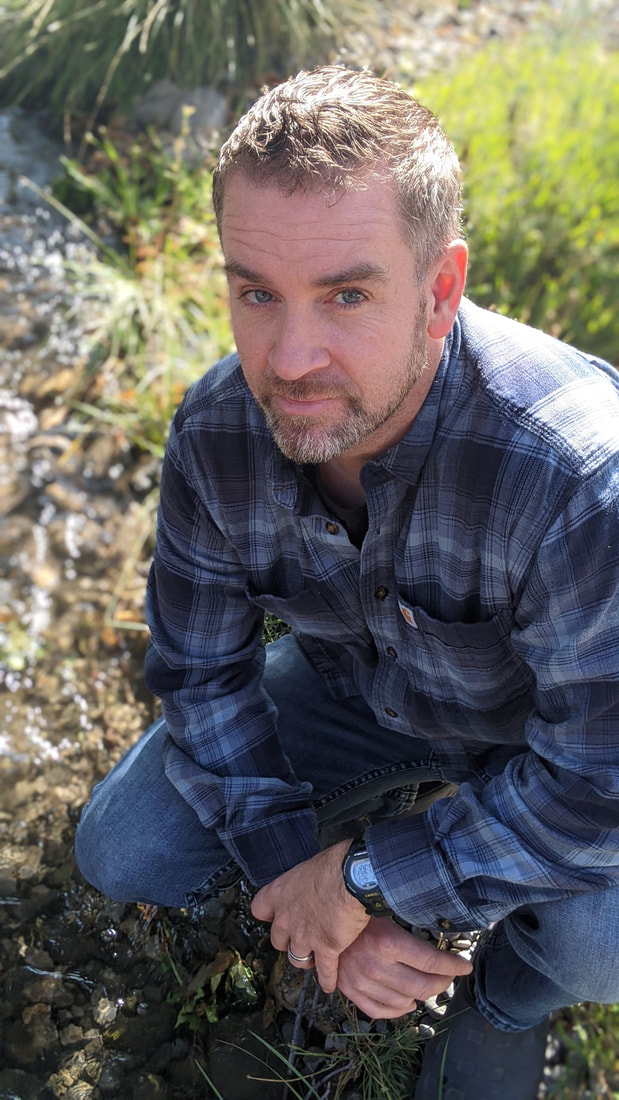Joe Wheaton is a fluvial geomorphologist, seasoned restoration practitioner, and professor of riverscapes at Utah State University. Wheaton is also one of the authors of the “Low-Tech Process Based Restoration of Riverscapes Design Manual”, a resource for restoration practitioners. Science Moab talked to Wheaton about his research, which focuses on understanding the dynamics of riverscapes and how fluvial processes shape instream and riparian habitats.
Science Moab: Can you start by explaining what ‘riverscape’ means?
Wheaton: Riverscapes are parts of the landscape that could possibly flood by the stream channels. We tend to think of flooding too often as a negative thing, but it’s not inherently a bad thing—it’s a natural process, and these floodplains and the rest of this riverscape is how rivers deal with excess energy. The riverscapes are not just a line, or channel, or a ditch. They’re the part that channel would be interacting with.
Science Moab: What is a structurally starved riverscape?
Wheaton: Rivers move water, but they also move a lot more than water—they move sediment that they erode, they move nutrients, and they also move a lot of wood. Riverscape structures are made of piles of wood, sticks, and organic matter. Beaver dams can also create structure.
But those structures cause flooding. This really weird thing can happen where even in the middle of a summer drought at low flow conditions, the riverscape floods. That just doesn’t seem right, but riverscapes will flood when they have this structure in them. The structure clogs things up, slows things down, and makes the flow of water less efficient. Historically, riverscape management has meant we try to make the river flow as efficiently as possible: we strip out the wood, get rid of beavers, and straighten out the channel. But that just turns rivers into dead ditches.
Ideally, a more structured riverscape would have periodic floods, because there would be a buildup of wood and sticks and organic matter. The floods would overflow into other channels to feed the rest of the system. Water wouldn’t move very efficiently—but it would be a healthier riverscape.
Science Moab: Why should we care about restoring these riverscape ecosystems?
Wheaton: Freshwater is key to our survival as a species. Without it we are done. Riverscapes provide us with freshwater: they slowly release water through the landscape and provide ecosystem services.
Let’s say I live in a city where there’s a watershed upstream and a river that runs through town. If I have a really efficiently drained riverscape upstream of me—if everything has been stripped out of the river—when there’s a runoff event, everything will pile up all at once, really fast, and create dangerous conditions for flooding. But if I have a healthy riverscape—if there is debris in the water path—that structure will attenuate the flow, and it’ll provide resilience during that disturbance event. Healthy riverscapes will also be able to recharge our groundwater during high flooding events, because the water will soak into the ground.
And they can form fire buffers, too: if a river is starved and desiccated, a wildfire could just march right through. Whereas if the riverscape is healthier, it’ll act like a sponge, holding water and providing refuge.
There are all sorts of benefits to maintaining healthy riverscapes, especially as the climate crisis becomes more pronounced. It’s all about resilience: resilience of our ways of life, resilience of communities, resilience of these landscapes. Our survival is tied to the health of riverscapes.
Science Moab: You mentioned beaver dams earlier—how do beavers fit into the equation of this restoration?
Wheaton: Beaver manipulate river settings to their liking, and they do that by building these amazing dams. Unlike dams that we’re used to, which are supposed to last for a really long time, beaver dams are ephemeral; they come and go. With the coming and going of those dams, we get much more complicated habitat that provides more niches for a whole range of different species.
Beavers aren’t the only example of structural forcing in riverscapes, but they’re one of the most compelling and obvious examples. There really aren’t that many species that take and manipulate the environment to their benefit the way humans and the beaver do. It just so happens that when beavers do this, it’s also to the benefit of so many other species that co-evolved with them, including ourselves.
Science Moab: Tell us about your do-it-yourself manual for initiating process-based restoration, which features the use of simple low-cost structural additions (i.e. wood and beaver dams) to riverscapes.
Wheaton: The main thing the manual does overall is it normalizes these sorts of practices, many of which have been around for centuries, but it normalizes them into a standard of practice that people and resource agencies could use. The manual teaches people how to recognize a healthy versus unhealthy riverscape, and what we can do to help—it’s a translation, if you will, distilling science into practical uses.
Science Moab is a nonprofit dedicated to engaging community members and visitors with the science happening in Southeast Utah and the Colorado Plateau. To learn more and listen to the rest of this interview, visit www.sciencemoab.org/radio.




